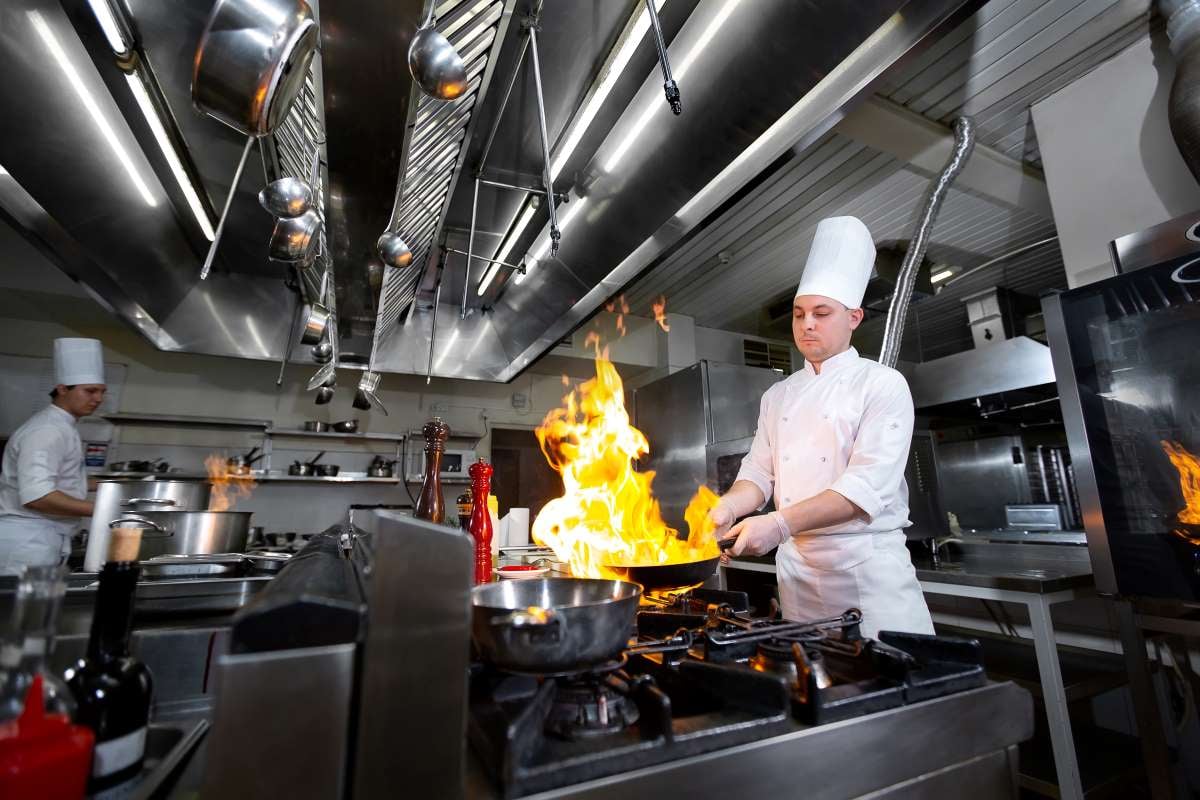
According to the National Fire Protection Association, more commonly known as the NFPA, kitchen hood fire suppression systems should be thoroughly inspected by a properly trained and qualified professional for grease build-up at least every 6 months.
As part of the inspection, various parts of the fire suppression exhaust system should be checked, including, but not limited to:
- Hood
- Grease removal devices
- Fans
- Ducts
When it is time for your kitchen hood fire suppression system to be inspected, Koorsen Fire & Security can help ensure the process goes without a hiccup.
Continue reading to learn:
- What exactly is checked as part of the semiannual kitchen hood fire suppression system inspection
- How to prepare for a kitchen hood fire suppression system inspection
- How Koorsen Fire & Security can ensure your kitchen hood fire suppression system passes the semiannual inspection
What Exactly is Checked As Part of the Semiannual Kitchen Hood Fire Suppression System Inspection?
The professionals who inspect kitchen hood fire suppression systems are meticulous and detail-oriented. You can expect them to check every component of the fire suppression system, from alarm pull stations to extinguishing agent nozzles and nozzle caps. NFPA Codes and Regulations require various tests to be run to ensure that every component of the fire suppression system functions properly.
Here are some examples of the tests and checks conducted as part of a kitchen hood fire suppression system inspection that complies with the NFPA Codes and Regulations:
- Air is pressurized through the extinguishing lines to make sure the lines are not blocked and that the lines will deploy the extinguishing agent in the event of an uncontrolled fire.
- Pressure gauges are tested to make sure they accurately display the extinguishing system pressure (PSI).
- Blow-off nozzle caps are checked to make sure they are protecting the nozzles from becoming covered in grease residue. The nozzles are checked to ensure they are not already clogged with grease.
- Visual check to make sure that tamper indicators and seals are present.
- Visual check for obvious physical damage.
- Check to ensure that the fire suppression is in an armed and ready condition and ready to activate.
- Shutoff valves are tested to make sure they stop the flow of fuel and disconnect electricity if a fire occurs.
How to Prepare for a Kitchen Hood Fire Suppression System Inspection
Performing monthly visual inspections is not enough to ensure a kitchen hood fire suppression system will pass inspection. While the exterior of a hood is easy enough to clean, cleaning the interior of the ducts is not so simple and requires a professional deep clean.
When a kitchen hood fire suppression system inspection is imminent, it is important that the management of a commercial kitchen be familiar with local, state, and federal regulations to know what needs to be done to pass the inspection.
NFPA 96, which sets the “Standard for Ventilation Control and Fire Protection of Commercial Cooking Operations,” should be carefully reviewed.
How Koorsen Fire & Security Can Ensure Your Kitchen Hood Fire Suppression System Passes the Semiannual Inspection
Our experts at Koorsen Fire & Security have years of experience with kitchen hood fire suppression system inspections. Our experts know the common problems that cause commercial kitchens to fail inspections and how to remedy and prevent these problems from recurring. In addition, our experts keep up to date with changes in the laws regarding hood fire suppression systems and keep up to date with changes to the NFPA Codes and Regulations.
When you partner with Koorsen to inspect, service, and maintain your kitchen hood fire suppression system, our experts:
- Check for visual signs to determine if the system has been fired, tampered with, or is leaking.
- Check to make sure all piping and conduit are secure and mounted properly.
- Check to make sure that extinguishing agent piping and nozzles are not blocked, and are properly positioned to cover appliance surfaces.
- Check and replace fusible links (the heat-sensitive component that triggers fire suppression systems).
- Check to make sure gas shutoff and electrical shutoff devices function properly.
- Check to ensure the correct extinguishing agent is being used and that the cylinder containing the agent is full.
Contact Koorsen Fire & Security today and ensure your kitchen hood fire suppression system passes inspection.


